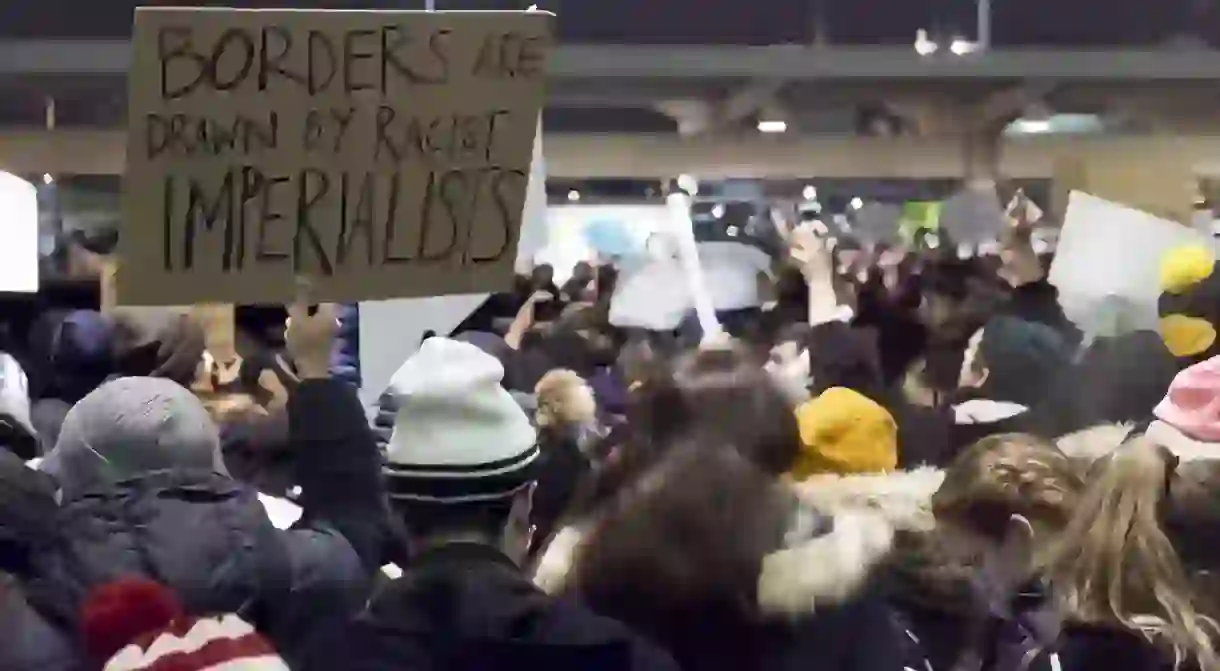Trump's Travel Ban Comes into Effect and What it Means for Travelers

Back in January, airports across the United States erupted in protest with the whirlwind announcement of Donald Trump’s travel ban targeting travelers from seven Muslim countries. The initial travel ban was blocked by lower courts; but this past Monday, the U.S. Supreme Court ruled to partially unblock the ban. As Trump’s travel ban goes into effect, here is everything travelers need to know.
Why was Trump’s travel ban initially blocked?
Back on January 27th, Trump signed an executive order titled ‘Protecting the Nation From Foreign Terrorist Entry Into the United States’ that aimed to block all refugee resettlement and block U.S. entry for people from Iran, Iraq, Libya, Somalia, Sudan, Syria, and Yemen.

The travel ban caught many by surprise, including Homeland Security and the U.S. Department of Justice who claimed to not have been adequately briefed on the order. Protests erupted across the United States as travelers were unlawfully detained at customs, regardless of green cards or visas. Seemingly overnight, several federal courts issued injunctions to block the ban (much to Trump’s dismay).
What is our country coming to when a judge can halt a Homeland Security travel ban and anyone, even with bad intentions, can come into U.S.?
— Donald J. Trump (@realDonaldTrump) February 4, 2017
In response, Trump issued a secondary travel ban that removed Iraq from the list of affected countries and was less restrictive. Again, his travel ban was shut down by various lower courts that—based on Trump’s anti-Muslim rhetoric on the campaign trail—argued the order was unconstitutional. Trump’s travel ban was then escalated to the U.S. Supreme Court where justices are currently weighing the arguments for and against the executive order.
When will the travel ban come into effect?
The U.S. Supreme Court will have until October 2017 to make a final decision as to whether to uphold Trump’s travel ban or not; but this past Monday the justices ruled to reverse some of the lower court’s rulings against the ban, allowing it to partially come into effect.
According to a memo issued from the White House on June 14th, President Trump ordered that the travel ban be enforced within 72 hours of injunctions being lifted. In other words, the travel ban will be implemented immediately.
VICE News reports that The Department of Homeland Security has said the ban’s implementation “will be done professionally, with clear and sufficient public notice, particularly to potentially affected travelers, and in coordination with partners in the travel industry.”
How does the travel ban affect travelers?
Trump’s travel ban ultimately will affect people from the six Muslim nations of Iran, Libya, Somalia, Sudan, Syria, and Yemen. The Supreme Court rules that the ban will apply to those people “who lack any bona fide relationship with a person or entity in the United States.”

What this means is that travelers with green cards, visas, university affiliation and other ties to the United States will not be denied entry. Tourists from the aforementioned countries who lack any relationship with the states can expect to be denied entry.
Additionally affected by the ban are refugees. Refugees who began the resettlement process prior to the ban’s implementation will be allowed to enter the States, but those waiting for resettlement may not be as lucky.
In addition to Trump’s partially unblocked ban, travelers will also be faced with increased security measures at airports, announced Homeland Security on Wednesday.













